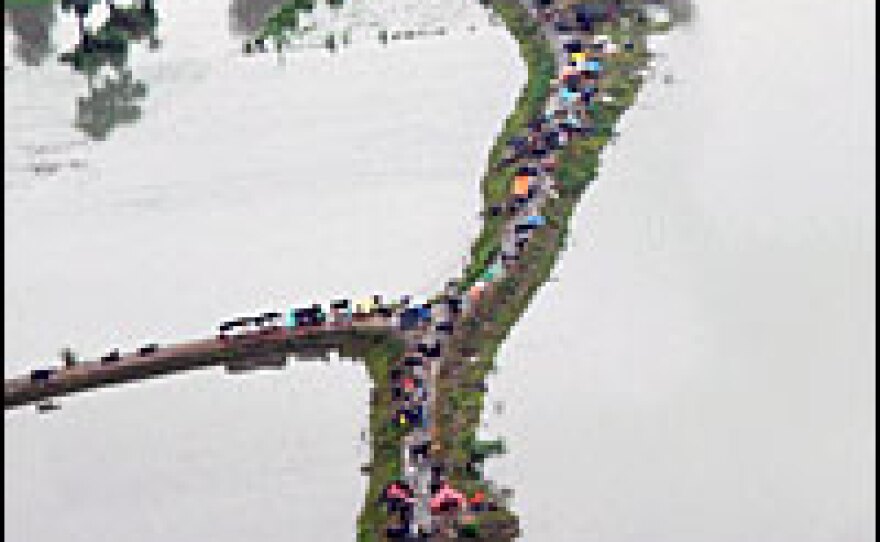

The death toll continues to rise in South Asia as flood waters begin to recede, giving hope to the millions that have been displaced from their homes by the monsoon. On Monday the death toll rose to 347 and authorities worry that number could grow if waterborne diseases spread.
Thirteen bodies surfaced in eastern Bihar state as six major rivers started receding, Manoj Srivastava, the state disaster management secretary, said Monday.
A 17-year-old died Sunday when he fell from the rooftop of his marooned village home into the flood waters while trying to catch a food packet dropped by an Indian air force helicopter in Darbhanga district, said Upendera Sharma, the district magistrate.
His death raised India's overall death toll in the past week to 191.
The death toll rose to 156 in Bangladesh, with 36 more deaths reported nationwide Monday, the Information Ministry said.
In a late night television address Sunday, the Bangladesh's military-backed interim leader Fakhruddin Ahmed appealed to all Bangladeshis to join army and government efforts to aid the flood-affected people.
"Any natural disaster like floods brings an opportunity for the nation to stand united," Ahmed said. "Let us stand beside the helpless flood-affected people hand in hand, imbued with the sprit of human welfare and patriotism."
The South Asian monsoon season runs until September as the rains work their way across the subcontinent, a deluge that spreads floods and landslides across the region and kills many people every year.
Indian officials say more than 1,200 people have died in their country alone since monsoon season began in June. Scores of others have been killed in Bangladesh and neighboring Nepal, where floods have hit low-lying southern parts of the country.
Some 19 million people have been driven from their homes in India and Bangladesh in recent days. At least 2 million people have found themselves marooned and unable to reach safe ground, though relief supplies have been airlifted to many.
Relief supplies have been air-dropped over the worst-hit areas of India's Bihar state, but some stricken residents have ended up fighting with each other in their desperate attempts to grab food parcels, officials said.
Water levels in three rivers, Ghagra, Rapti and Gandak, in Uttar Pradesh state have started receding or remain constant, said Mahindra Awasthi, a spokesman for the Central Water Commission in Lucknow, the state capital.
"If this trend continues it will give a big respite to the millions of marooned people," he said.
The meteorological office forecasts minimal rains in north and northeastern India during the next 24 hours.
As rains ease, doctors and paramedics have started supplying medicine to people to prevent diarrhea, skin allergies and other waterborne, diseases, said S.K. Gupta, an Indian army officer.
Army doctors treated 235 people suffering from waterborne diseases in makeshift camps near Gorakhpur, a town 155 miles southeast of Lucknow, said Gupta, who is commanding a unit involved in relief operations.
"Our effort is to prevent the outbreak of an epidemic," he said.
From NPR and The Associated Press.
Copyright 2022 NPR. To see more, visit https://www.npr.org. 9(MDAzMjM2NDYzMDEyMzc1Njk5NjAxNzY3OQ001))





